How to use your customer data to increase performance marketing results
August 23, 2023 •Chris Simpson

For retail and direct brands it can be hard to get through to your ideal customers, or even your existing customers, especially when there are so many brands competing for their attention and advertising costs are increasing.
This article shares how to use your first party data to get the best results from your performance marketing investment. more2's CMO, Chris Simpson, and Paid Search Account Director, Sam Macnaghten, share how you can acquire customers with higher Customer Lifetime Value (CLTV), reduce acquisition costs, and how to build your lists.
Acquire the right customers at the right cost
Pareto’s Principle (the 80/20 rule) dates back to 1906 but is no less applicable today. We know that all customers are not created equal and when you have an accurate single customer view and an understanding of channel source per customer, you'll be able to see this even more and will be able to model how various attributes influence your Customer Lifetime Value (CLTV).
By experimenting with which channels are being used to engage customers, or which personas are being targeted, you take control over where to reduce the Cost Per Acquisition (CPA) for efficiency, and where to increase CPA for those with a higher CLTV.
This particularly applies to Google Performance Max campaigns, where you typically run campaigns by product category. The Average Order Value (AOV) of the first order is typically highly predictive of that customer’s lifetime value so the high value product groups should afford a higher CPA.
Review social data
With so many social media platforms to choose from, each with their own nuances and resource overheads, be sure to analyse where your customers are before launching campaigns on every platform.
By being selective, you can ensure that spend levels are high enough for the AI to learn and scale from. This is more important since Apple’s privacy changes in IOS 14, meaning each platform has less data to work with.
Take a look at your customer demographics – each generation tends to have a preferred social platform so this could be a good starting point. That said, there’s no substitute for running a robust test over a few months to assess a platform’s potential.
Create and maintain high quality first party audiences
It’s important to have first party audiences either through activity on your website or customer match lists from the database. This is not just about targeting existing customers with more relevant messaging; it also enables you to build lookalike and similar audiences for acquisition.
This starts with your on-site buying journey – what proportion of your new customers are you able to able to contact or use in lists? By optimising your permission language in the order process, you can maximise your ability to market to them.
For site activity, the two most essential lists are site visitors and converters, but a lot more can be done in terms of customising lists.
With offline customer lists, it is worth deduping and cleaning your data before uploading to platforms like Google and Meta because the match rate will be higher. In the case of Meta, they can accept up to 3 emails and 3 mobiles for each customer, as well as a full address, so you have more chances to make a match.
Lookalike and similar audience lists
Both Google and Meta use the seed lists you upload to create audiences of prospective customers who have similar interests and shopping behaviour to your existing customers.
These are becoming less useful as both Meta’s Advantage Plus and Google’s Performance Max formats require that you don’t limit the audience – the AI is designed to find the right people to serve your ads to.
Even so, the more you can use your first party data to train these platforms on your customers, the better your edge over the competition.
If you have a larger customer database, you can narrow the seed to repeat customers rather than all customers, which will help you recruit a more loyal customer base. These can be used to narrow targeting in more upper funnel prospecting campaigns.
An important note for lists built using Google Analytics – post the transition to GA4, old Analytics lists will stop populating and shrink over time. It’s vital that you rebuild these lists in GA4.
Take advantage of audience API’s
Customer Match lists should be updated on a regular basis to ensure that they give as up-to-date information as possible to platforms on your customers. However, in order not to reset campaign learnings, investigate whether you can take advantage of the audience API’s provided by the main platforms – these allow server to server data feeds that are less likely to interrupt campaign performance.
At more2, we usually host our clients' Single Customer View databases (SCV) and rebuild them on a weekly or daily basis - this means we always have a clean, optimised source of data to build a seed list from.
Thanks to the API, we don't need to over-write our active seed lists every time, which means campaign learnings are retained. The API compares the incoming file with the existing list and only adds or removes the new or lapsing records respectively. As you would expect, we usually see a step change improvement in performance when these evergreen audiences go live.
Make your audiences count
Using effective seed audiences to build Lookalikes allows for more relevant mass reach:
- Existing Customers - finding people who closely match your existing customers. This allows you to expand your reach to find people who are the most important to your business.
- Make use of Lifetime Value – Value optimisation ensures that the focus is on your most profitable customers.
- Pixel data of specific actions performed on-site such as added to cart and purchase audiences will assist in qualifying your audience.
------------------------------------------------------------------------------------------------------------------------------------
If you want to find out more about utilising your first party data to grow your direct or retail brand, sign up to join our masterclass which covers this and lots more in detail.

